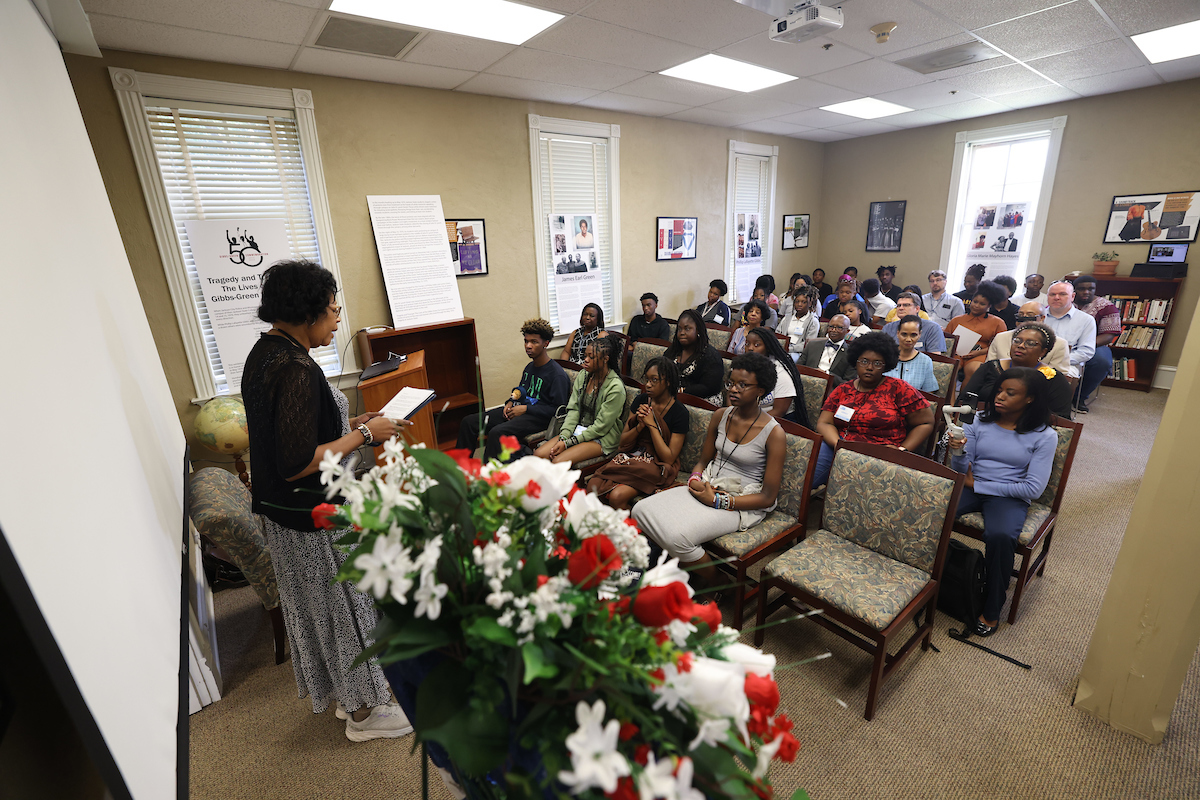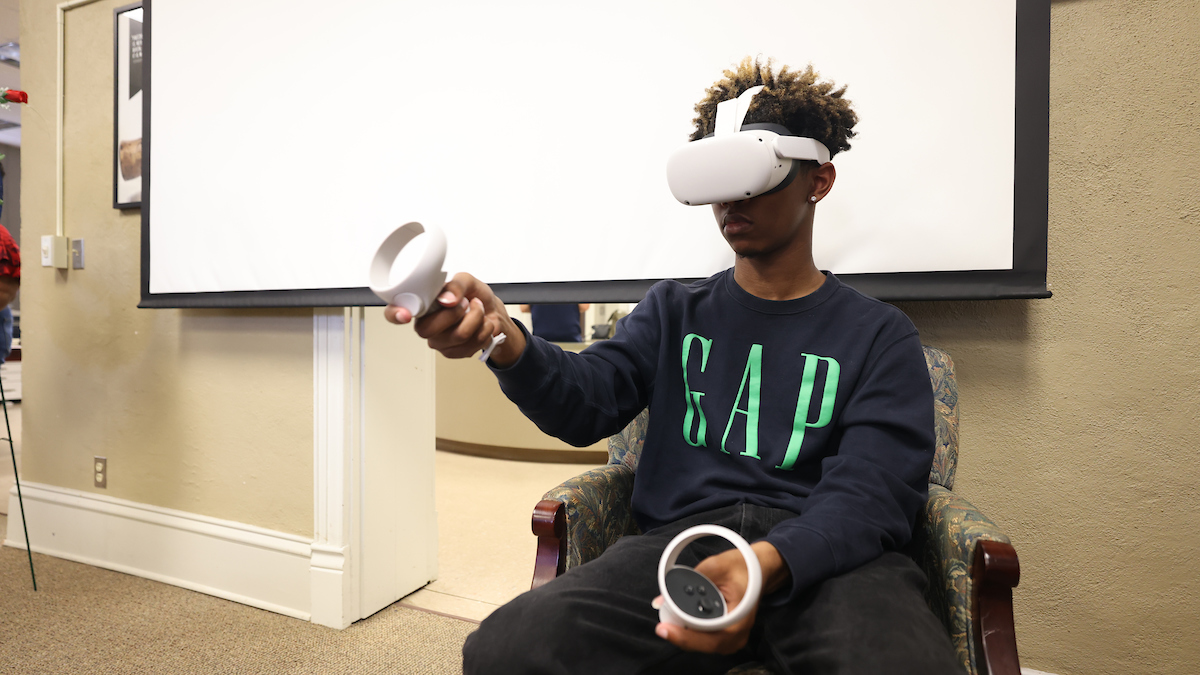Disclosure: Jackson State University is an HP customer and has received loaned and/or donated equipment from HP.
Virtual reality can bring history to life, providing an immersive experience of events that continue to shape who we are today.

Institutional Profile
Jackson State University, founded in 1877, is a historically black, high-research-activity university located in Jackson, the capital city of Mississippi. Jackson State's nurturing academic environment challenges individuals to change lives through teaching, research, and service. Officially designated as Mississippi's Urban University, Jackson State continues to enhance the state, nation, and world through comprehensive economic development, healthcare, technological, and educational initiatives. The only public university in metropolitan Jackson, Jackson State is located near downtown, with five satellite locations throughout the area.
The Challenge/Opportunity
VR projects such as the I Am A Man and Traveling While Black experiences have been used to highlight some of the history of race relations in America. Inspired by these projects, Almesha Campbell, assistant vice president for research and economic development at Jackson State University (JSU), wanted to create a project that highlighted a local police shooting on JSU's campus on May 15, 1970, known as the Gibbs–Green Shooting, that led to the deaths of two young Black men. Just days after the infamous Kent State shootings on May 4, a student protest took place in Jackson, Mississippi. Soon afterward, dozens of heavily armed police officers confronted a crowd in front of a women's dormitory on JSU's campus, opening fire after hearing a loud sound (possibly a bottle breaking), killing two young men—a college student, Phillip Lafayette Gibbs, and a high school student, James Earl Green—and injuring many others. It took decades for the state of Mississippi to apologize for the events that took place that day, but no one was ever charged or prosecuted. After the shooting, graduation was cancelled, and in 2021, at the annual commemoration that JSU holds to remember the shooting, the university finally conferred degrees for some of the students from the class of 1970. But many students and faculty at JSU, as well as others in the larger community of Jackson, know nothing about this history, so Campbell wanted to find a way to highlight these events and bring more attention to them (see figure 1).

Rather than just trying to create a history lecture or poster, Campbell wanted not only to showcase how technology was used to preserve this story but to do so in an innovative and immersive way. With a grant of VR equipment from HP, she saw an opportunity to do just that. Like many institutions, JSU is under-resourced, and because of that, the institution has had limited opportunities to explore new trends and technologies such as VR without help from grants. This grant of equipment was an opportunity to commemorate an important event and bring the story to current students, faculty, and staff at JSU, while also giving them an opportunity to gain experience with new technology (see figure 2).

Campbell has been working to do even more with the VR headsets and has applied for grants of other technologies, helping develop the JSU Center for Innovation and Entrepreneurship, where students can access many up-and-coming technologically related opportunities, such as VR, 3D printing, and esports. This center is especially important at an HBCU such as JSU, where students would not usually have access to these technologies outside campus but might nevertheless need to compete in a technologically adept workforce after they graduate. By developing the innovation center, JSU provides students the opportunity to have hands-on experience that can help them develop new skills they can use in tech-related job markets, as well as develop entrepreneurial skills. At the same time, students have a place where they can experiment, learn, and develop relationships and soft skills with peers and mentors, free of additional expenses.
Process
To help understand the process and the skills necessary to pull off a project like this, Campbell first enrolled in a three-month XR class with the local vendor, which gave her the opportunity to understand the value and necessary key elements of a VR project. After learning firsthand how specialized the skills were and how difficult the work would be, Campbell decided to go the same route as many others entering the VR scene: looking to an outside vendor for help. Luckily, she found a local vendor in the Jackson area who was excited and able to partner on the project.
While working with the vendor, the JSU team made efforts to ensure the VR experience accurately reflected the locations and events from the Gibbs–Green shooting. The team put in extensive work researching official documentation of the events, making sure to share the information with the vendor so they could bring the events to life. They took 360-degree videos both at the dormitory where the shots were fired and in the president's former office where he would have been when he heard of the shooting. Within the experience, they included archival video footage from the local news, as well as still photos and newspaper clippings that users can pick up and examine as the story unfolds around them. They also added a personal touch to the development by having the former president of the university, who served during the events, record the speech he wrote and delivered following the shooting. Also included is footage of the commencement ceremony 51 years after the tragedy.
To help ensure product development followed Campbell's plans, regular meetings with the development team were essential throughout the production process. The regular communications and meetings helped define the goals of the VR experience to ensure the end users could experience a bit of what it would have been like to witness the events firsthand. The members of the team were also able to catch any issues of accuracy early, before too much development work had been done, while the vendor made sure the JSU team was aware of the limitations of the technology so they could plan for the most realistic and best possible outcome. The partnership led to a great final product, and now both sides have a better understanding of how to improve the development process for future collaborations.
Overall, this project helped support Campbell's and JSU's goals of providing innovative technology to students while also honoring the past and ensuring the current generation can experience and learn more about the history of events like the Gibbs–Green shooting. This initial VR project also helped open new dialogues with students and faculty about the value and potential for future VR projects at the institution, with many faculty wanting to use the technology to aid in their students' learning. Working with a local vendor also helps provide opportunities for students to gain experience with a professional industry through site visits or meetings with developers to learn about their processes.
Outcomes and Lessons Learned
Hiring a vendor for development helps get early projects off the ground. After experiencing firsthand the effort and development skills necessary to create even a rudimentary VR program, Campbell realized it would take too much time to get the Gibbs–Green experience running using only in-house resources. Many institutions getting into VR for the first time opt to work with a vendor for expediency and to capitalize on the experience the vendors can use to assemble a more polished project. Additionally, working with a local vendor allows for extra opportunities for students, faculty, or staff to visit and test the experience while it's in development and even for opportunities to learn skills to develop their own VR experiences.
Showcasing technology can drive interest across the institution. When the discussion of VR technology began at JSU, few faculty were interested in working with Campbell to develop a project. With emerging technologies like VR, communicating the benefits they can bring to students, faculty, and researchers can be challenging, but Campbell's work on the Gibbs–Green project allowed her to showcase the use of VR technology and spark interest in history and sociocultural challenges. Her project helped drive interest by giving people hands-on experience while laying the groundwork to ease the development of future projects. Additional projects are now in development for various departments on campus, specifically in chemistry, physics, engineering, communicative disorders, and atmospheric sciences.
Impactful VR projects can deepen and enrich the learning experience. Not only will this project help showcase the history of the Gibbs–Green shooting at JSU, but both the Mississippi Museum and the Mississippi Department of Archives and History have expressed interest in showcasing the VR experience. This kind of recognition and exposure comes from creating such an impactful project and helps drive interest in the university and the technology. In fact, on June 7, 2023, JSU hosted a Gibbs–Green memorial event on campus at which attendees could view the VR experience independently in a separate, designated space or collectively at the conclusion of the event. Officials at JSU recorded feedback from attendees who participated in the VR experience:
"It's one thing to read about it, and it's another thing to actually go into virtual reality and feel like you are part of it. It had more of an impact on me because it was like I was there. Reading about it or hearing about it is something completely different. You can feel it. You can visualize yourself deeper in that situation, leading you to have strong emotions."
"Watching this reenactment via virtual reality brings you into the events—the shootings. I never imagined the shootings prior to this. I always thought that the police passed through the campus and kept going. This created a better visual."
"Virtual reality is a great way to remember history. And I think a lot of times we try to sugarcoat history. Those two young men lost their lives and had a good future ahead of them. Many people were injured. I can imagine the psychological scars. My grandmother was in the building when it happened. She told us about it. And, yes, she started crying when I started crying because I could see from her that it still had an effect on her."

Where to Learn More
- "Gibbs–Green Virtual Reality Experience Unveiled at JSU," Visit Jackson, June 26, 2023.
- For more information, explore what's available at JSU's Innovation Center.
- Jeffrey Pomerantz and Randy Rode, "Exploring the Future of Extended Reality in Higher Education," EDUCAUSE Review, June 29, 2020.
Almesha Campbell is Assistant Vice President for Research and Economic Development at Jackson State University.
Sean Burns is Corporate Researcher at EDUCAUSE.
© 2023 Almesha Campbell and Sean Burns. The text of this work is licensed under a Creative Commons BY 4.0 International License.
